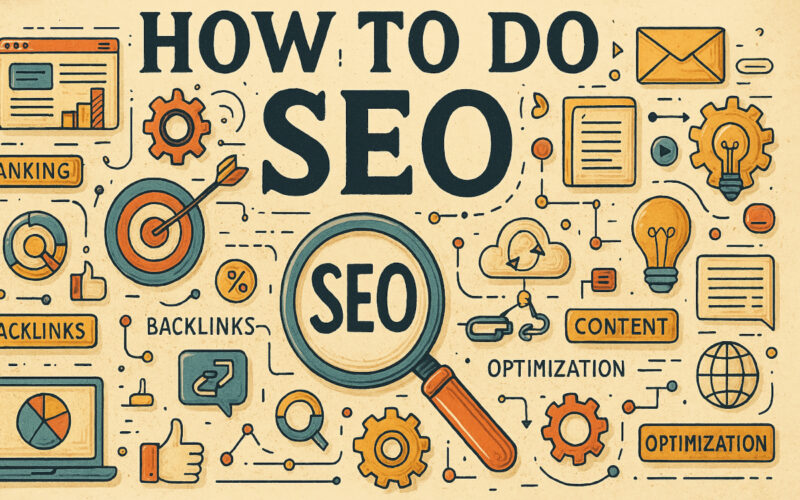Imagine yourself in front of two sneaker ads. One throws technical data at you: non-slip sole, recycled materials, competitive price. The other tells you the story of an amateur athlete who, through hard work and those sneakers, manages to finish their first marathon. Which one do you remember better?
That’s storytelling: the ability to tell purposeful stories. In the world of digital marketing, it’s a narrative technique that aims to emotionally connect with the audience, improve brand recall, and create a genuine bond.
Understanding what storytelling in marketing is is key to standing out in an environment full of messages. It’s not just about “selling,” but about creating experiences that resonate in the mind — and the heart — of the audience.
Understanding storytelling: definition, origin, and evolution
To understand what storytelling means, we must first look at its origin: telling stories is as old as humanity itself. From cave paintings to orally transmitted tales, narratives have been our main vehicle to share knowledge, emotions, and culture.
Over time, this technique migrated from literature to film, television, and more recently, to digital marketing. Today, storytelling is an essential part of brand strategy, used to convey values, positioning, and messages with greater impact.
Knowing what storytelling is means recognizing its power of synthesis: it allows us to translate complex ideas into memorable stories. This evolution has turned storytelling into a powerful tool that transforms content into experiences.
Why is storytelling important in digital marketing?
In a world saturated with information, telling a captivating story is a way to humanize brands. It’s no longer enough to say what you sell: the consumer wants to know why you do it and how it fits into their life. That’s where the importance of storytelling comes in.
Why is storytelling important in digital marketing? Because it helps build lasting connections, generate trust, and stand out in the consumer’s mind. A brand with a good story feels closer, more real, more memorable.
Moreover, well-executed storytelling increases engagement on social media, boosts conversion rates, and strengthens customer loyalty. Knowing when to use storytelling — in launches, campaigns, brand content — can make the difference between going unnoticed or staying memorable.
Connecting with emotions: the power of a well-told story
Let’s be honest: the decisions we make, even purchasing ones, are often driven more by emotion than pure logic. A well-told story has the unique ability to strike an emotional chord. When a narrative moves us, inspires us, or makes us feel understood, it creates a powerful connection. Effective storytelling not only informs—it also moves.
That emotional connection fosters closeness and empathy. The audience stops seeing the brand as an abstract entity and starts perceiving it as something they can relate to. This empathy translates into stronger recall: we’re much more likely to remember a brand whose story touched us emotionally than one that simply listed its features. The power lies in making people feel, not just making them think.
Standing out in a saturated market
Imagine a shelf full of nearly identical products. What makes you choose one over the other? Often, it’s the story the brand tells. In markets where competition is fierce and functional differences are minimal, storytelling becomes a key differentiating factor. A unique and authentic narrative can make your brand stand out like a beacon in the fog.
Brands like Apple don’t just sell technology; they sell a story of innovation, creativity, and challenging the status quo. Nike doesn’t just sell sneakers; it sells a story of personal growth and reaching your full potential (“Just Do It”). These brands use storytelling to build their own universe—a set of values and a promise that goes beyond the physical product, allowing them to stand out and create a loyal customer base that chooses the brand for what it represents.
Building brand identity: the role of brand storytelling
This is where the concept of brand storytelling comes into play. It’s not just about telling one-off stories in isolated campaigns, but about weaving a coherent and consistent narrative that defines the very essence of the brand. Brand storytelling expresses the company’s purpose, values, mission, vision, and origin story in an engaging and meaningful way.
Telling the story behind the brand (who we are, why we do what we do, what we stand for) helps build a strong and authentic identity. This core narrative serves as a guide for all brand communication, ensuring consistency across every customer touchpoint. A well-defined brand storytelling strategy not only attracts the right customers but also inspires and aligns employees, creating a strong company culture.
Storytelling structure: how to build an effective story
Every captivating story, from classic tales to blockbuster hits, shares a fundamental structure. Understanding the structure of storytelling is key to creating narratives that work.
The essential elements usually include: a character (someone the audience can relate to or empathize with), a conflict or challenge (the driving force of the plot), a storyline (the sequence of events leading to resolution), and a resolution (how the conflict is overcome). Finally, every story should leave a clear message or moral.
A classic model that perfectly illustrates this structure is the “Hero’s Journey”, popularized by Joseph Campbell. It describes a recurring pattern in myths and legends: a hero who leaves their ordinary world, faces trials and hardships, and returns transformed with a reward or insight. Adapting this storytelling structure to marketing means presenting your customer as the hero, their problem as the conflict, and your brand or product as the tool or guide that helps them reach the desired resolution.
Joseph Campbell and the guidelines for building a good story
Men dressed in gray uniforms march like automatons through a dark tunnel. Through another tunnel, a woman runs with a hammer in her hand, like a mythical heroine. The woman throws the hammer and breaks the screen that has the men hypnotized. Over this image appears the caption: “On January 24th, Apple Computer will introduce Macintosh. And you’ll see why 1984 won’t be like ‘1984.’”
This is the iconic Apple ad for the 1984 Super Bowl. Before it aired, executives considered the ad irresponsible because it didn’t show the product, but it ended up making history. How? By doing exactly that: telling a story.
Your brand can stay in consumers’ minds for the length of a commercial, or it can become part of the cultural imagination of an era—the difference lies in effective storytelling.
Our friend David Sable (Y&R boss) states that “a creative must understand why we still read Shakespeare, the Iliad and the Odyssey, or the Bible.” Even with new technologies, Sable emphasizes the need to return to the basics, to the essence.
“Facebook didn’t create the ability to share. It’s true that it made it more efficient, but humans have always shared. That’s why it’s about having a good product and then having a good story to tell.”
To understand the art of storytelling, there’s no one better than scholar Joseph Campbell. This good man spent decades of his life studying the tales of ancient cultures from both the West and the East to identify the patterns that unified them.
Campbell then concluded that, in all eras and cultures, stories always followed the same structure and relied on a few elements: a hero, a challenge, a journey, an enemy, symbols, allies, and a moral ending.
From these observations came “the hero’s journey”: a framework used by creatives all over the world and across all industries. Studying the elements of the “hero’s journey” is key to building any kind of story, whether it’s Star Wars or Apple’s campaign.
Types of storytelling and when to use them in your strategy
Knowing the different types of storytelling allows you to choose the most appropriate approach based on your communication goals. Each type has distinctive characteristics and works best in specific contexts. A comprehensive content strategy often combines several types of storytelling to keep the audience engaged and address different aspects of the brand or product. The key is to select the type that best fits the message you want to convey and the channel where it will be shared.
Emotional storytelling
Emotional storytelling focuses on evoking specific feelings that create a deep connection with the audience. This approach takes advantage of our natural tendency to better remember what moves us, whether through joy, nostalgia, hope, or even controlled outrage at injustices that the product or service helps to resolve. This type of narrative is particularly effective for mass consumer brands or those seeking to stand out in highly competitive markets.
Campaigns like Always’ “Like a Girl” or Dove’s “Real Beauty” are perfect examples of emotional storytelling that transformed the perception of entire brands. In both cases, the stories went beyond the product to connect with universal values such as self-esteem and equality, generating millions of organic interactions.
Emotional storytelling works especially well in audiovisual formats, where elements such as music, narrative rhythm, and facial expressions can be used to intensify the emotional response.
Institutional storytelling
Institutional storytelling focuses on the story behind the brand: its origins, founders, challenges overcome, values, and mission. This type of narrative humanizes the company by showing the people and purposes driving it, generating trust and authenticity. Institutional storytelling is especially valuable for startups looking to position themselves, family businesses wanting to highlight their tradition, or companies that have undergone major transformations reflecting their commitment to certain values.
Brands like Patagonia masterfully use institutional storytelling by sharing not only the story of its founder Yvon Chouinard, but also the business and ethical decisions that reflect its environmental commitment.
This type of narrative works particularly well in formats like short documentaries, “About Us” sections on websites, or anniversary posts on social media. What’s crucial is to remain authentic, as today’s audiences quickly detect fabricated or exaggerated stories.
Testimonial storytelling
Testimonial storytelling leverages real experiences from customers or users to build believable and relatable narratives. By showing how people similar to the target audience solved their problems or improved their lives thanks to the product or service, it creates a powerful social proof effect. This type of narrative is particularly effective in the later stages of the conversion funnel, when potential customers are evaluating alternatives and need reassurance to make their decision.
Platforms like Airbnb have made testimonial storytelling the core of their content strategy, allowing guests and hosts themselves to share transformative experiences. The same goes for brands like Fitbit, which build much of their communication around user stories that highlight significant health improvements.
The key to effective testimonial storytelling lies in selecting authentic stories that represent the brand’s values while being relatable enough for the audience to see themselves in them.
Some types of campaigns based on storytelling
When designing a story for your company, it’s a good idea to think about what kind of narrative will benefit you the most. Here are some examples:
- Foundational story: Many well-known brands have based their campaigns on attributing sentimental value to their origin story. In general, these campaigns rely on the values of family, tradition, and hard work. They encourage consumer loyalty and a sense of familiarity with the products. This is the case for brands like Johnnie Walker, Otto Schneider, and Hausbrot.
- Emotional connection: Some brands aim to associate their products with a specific feeling—the most famous example of this is Coca-Cola. Its campaigns have always been based on conveying a sense of happiness, togetherness, and family moments tied to the brand. That’s why in 1971 they created one of the most iconic ads of all time, now known as the “hilltop ad.” Its main idea was to present Coca-Cola not just as a beverage, but as an excuse to share a moment with someone else.
- Experience and adventure: Certain brands focus their campaigns on experiences, adventures, and possibilities associated with their products. For these campaigns, the most important thing is to stimulate the customer’s imagination and curiosity. This way, they’ll be tempted by the possibilities the product offers. Examples of this strategy include: LEGO, GoPro, and Hilux.
- Positive impact: Other brands seek to associate their products with good deeds, innovation, and socially and environmentally conscious practices. In general, their customer base consists of people who care about these issues and want to use their consumer choices to make a difference. For these brands, it’s important to focus on the ways their product creates a positive impact in the world. This is the case for brands like Toms, Warby Parker, and Natura.
- Humor: Some brands prefer to base their campaigns on funny stories that consumers can relate to. In this type of campaign, success is determined by the ad’s boldness or cleverness and how accurately it targets its demographic. For example, the Banco Galicia ads are aimed at a middle-aged audience who identify with the caricatured couple dynamics portrayed.
Successful Case Study: Storytelling in Natura’s Campaigns
Natura is a Brazilian cosmetics company founded in 1969. With the tagline “Well-being well,” it is committed to maintaining the well-being of both people and the environment.
Natura’s main competitor is AVON, which has a longer history. That’s why Natura’s marketing strategy focuses on highlighting the innovative nature of its brand. Their products are positioned in a way that links them to nature, well-being, Indigenous communities, and progressive values.
One of the most important elements for effective storytelling is timing: telling stories that people want to hear at a specific moment. To achieve this, trends and socioeconomic events that influence people’s interests—and consequently the market—must be considered. For its 2018 campaign, Natura took into account the international rise of feminism among younger generations. That’s why they centered their campaign around messages such as: “strong, powerful, bold” or “being a man is much more than being macho.”
The campaign was highly effective. In particular, their ad “Homen celebrates all ways of being a man” has over a million views on YouTube, and in the comments users literally say things like “Take all my money” or “You’ve won my heart.”
Thanks to this careful work, Natura ranks among the brands with the best reach on social media, and its sales improve year after year.
In the end, if you can’t come up with ideas for an ad, you can always turn to grandmothers: they’re an endless source of stories. And they know how to tell them.
How to Create Effective Storytelling: Step-by-Step Guide
Knowing how to create storytelling doesn’t require being a novelist, but it does involve following a few essential steps. Here’s a practical guide to get started:
- Define your goal and know your audience: Before writing a single line, ask yourself: What do I want to achieve with this story? Who am I telling it to? Storytelling must have a clear purpose and adapt to the language, interests, and values of your audience.
- Choose the right narrative format: You can tell your story through a video, an Instagram post, a podcast, or an email marketing campaign. Each channel has its own logic and style. Choosing the right format enhances the impact of your narrative.
- Ensure consistency with brand tone and identity: A powerful story is useless if it doesn’t reflect the brand’s voice and values. Everything must be aligned: language, aesthetics, emotions, purpose. That’s how a consistent and memorable narrative is built.
Conclusions
As we’ve seen throughout this journey, storytelling is much more than a passing trend in digital marketing; it’s a fundamental strategic tool. Understanding what storytelling is and mastering its craft allows brands to connect with their audience in a more human, deep, and meaningful way. The importance of storytelling lies in its ability to evoke emotions, differentiate the brand in competitive markets, and build a strong and memorable identity.
It’s not just about telling any story, but about crafting authentic narratives, well-structured and aligned with the brand’s goals and identity. We hope this guide has given you a clear vision of its power. Now it’s your turn to start telling your brand’s story.Want to dive deeper into how content marketing and storytelling can boost your digital strategy? We invite you to keep reading our blog. And if you’re ready to take your brand’s narrative to the next level, don’t hesitate to contact us. At MD Marketing Digital, we’re here to help you tell your best story!
- What is storytelling and why is it key in digital marketing? - April 25, 2025
- The Impact of No-Click Searches on SEO - January 10, 2025
- Edward Bernays: The art of manipulation - June 30, 2023
¿Qué te pareció este artículo?
What do you think about this post?






